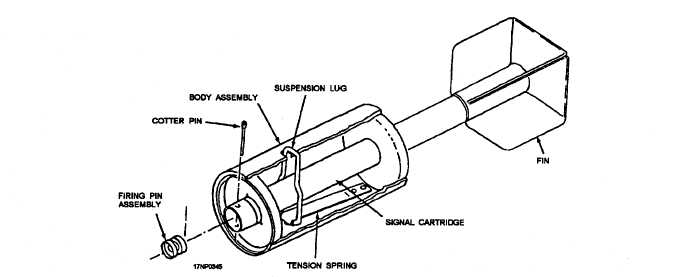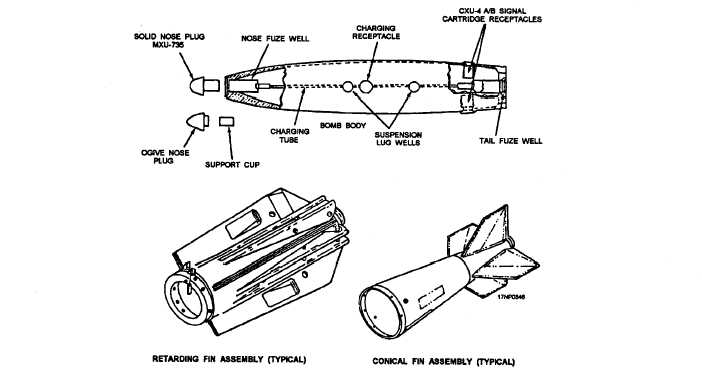Figure 13-14.—BDU-48/B practice bomb.
1. Remove the bomb assembly from the container.
5. Carefully insert firing pin assembly into the nose
2. Remove the firing device and inspect for rust or
deformation. Refer to figure 13-14 for identification of
the components.
3. Inspect the blast tube for rust and deformation.
Clean as required.
4. Insert the signal into the sleeve. With the firing
device removed, elevate the nose of the bomb. Insert
the Mk 4 or CXU-3A/B practice bomb signal, primer
end up, and slide it gently into place. Do not use force.
of the bomb.
6. Align firing pin assembly notches with the two
holes in the nose end of the bomb. Insert cotter pin
through holes in bomb body, and spread end of cotter
pin just enough to remain in place.
For detailed information concerning the preparation
of practice bombs for aircraft loading, refer to the
publication NAVAIR 11-140-5.
FULL-SCALE PRACTICE BOMBS (BDU-45)
The base flange of the signal cartridge must rest on the
Preparation and inspection of BDU-45 (fig. 13-15)
bore shoulder.
full-scale practice bombs are the same as the GP bombs
Figure 13-15.—BDU-45/B (typical) practice bomb.
13-15





